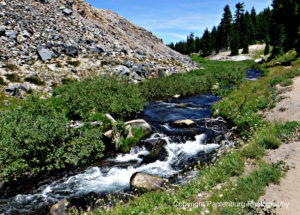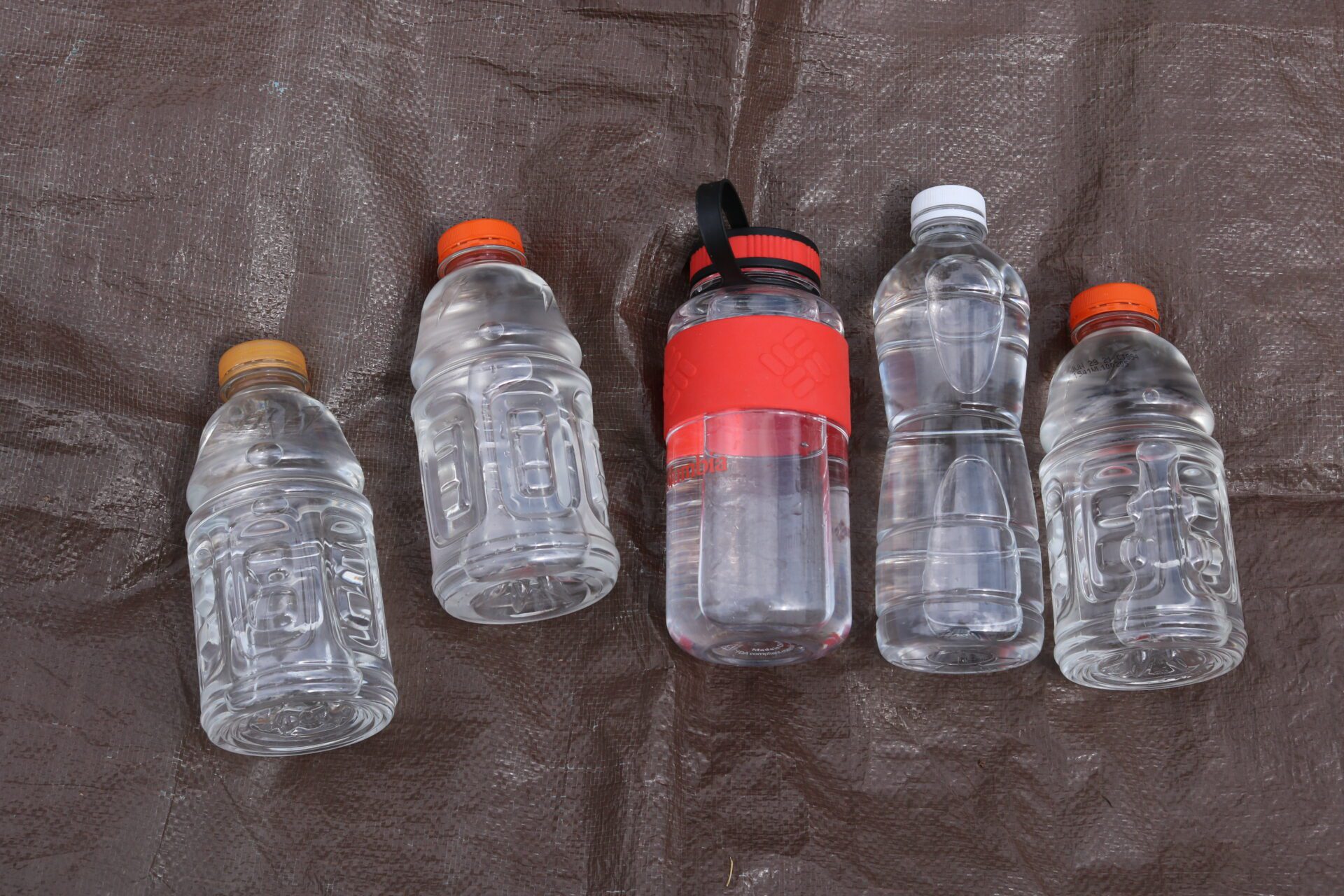.
Ultraviolet (UV) light is electromagnetic radiation, invisible to humans.
It works very well to help purify water with this simple method.
by Leon Pantenburg
If you have bright sunshine, and a clear plastic bottle filled with water, you have all the ingredients for a successful water purification system. And it’s simple: put the filled bottle in bright sunshine for about six hours. At the end of that time, your water should be safe to drink.
The World Health Organization (WHO) recommends the following low tech method of disinfecting water. Using only sunlight and PET plastic bottles, the SODIS (solar disinfection) method uses a combination of UV sunlight and increased temperature to kill pathogens in the water.

Water from this rushing creek is probably already pretty clean. But you don’t know if there is a rotting elk carcass in the stream just around the corner.
This post from Merry Bevill of the excellent website Sunshine on My Shoulder explains the process.
How To Purify Water Using The Sun
- The water should be from a clean, well known water source, such as a lake or stream. Running water is best. Avoid standing water; smelly water; water with an oily look; and water near latrines and sewers.
- The water must not be chemically polluted. This method will kill bacteria, it will not remove chemicals.
- If the water has visible contaminants, such as dirt, mud, or debris, filter the water by pouring it through several layers of cloth to catch as much sediment and debris as possible. Then any remaining sediment settle to the bottom and filter until the water is as clear as possible. The UV rays will not be able to penetrate through cloudy, dirty water.
- Use clean, clear soda or water bottles no larger than 2 liters. The bottles need to be in good condition with no scratches or other visible signs of wear. It is best to use a “PET” (PolyEthylene Terephthalate) bottle. Look for the recycle code #1 on the bottom.

- Colored plastic and glass bottles will block too much of the UV rays. Indeed, some glass will block the UV rays completely
- Fill the bottles 2/3 full of water and shake for 20 -30 seconds. This will saturate the water with oxygen, which will help to kill the germs. Then finish filling the bottles to the brim with water. Lay them down in the sun. Do not stand them up. Laying them down allows the UV rays to penetrate to maximum depth.

- Although not necessary, if possible lay the bottles on a reflective surface to optimize the UV exposure.
- If the sky is mostly sunny with only a few clouds, then 6 hours of sunlight will be enough. However, if the sky is more than 50% cloudy, then it will take 2 days to purify the water. The ambient air temperature is not a factor, it is the strength of the UV sunlight that is significant. If there is a question about the proper length of time because of the sky conditions, it is best to err on the side of caution and allow the full 2 days of exposure.
- While there is some concern that toxins may leach out of the plastic bottle during the process, the Swiss Federal Laboratories For Materials Testing and Research have examined this process and found that the levels of toxins from the bottles is far below the WHO guidelines.

PET bottles that will work for water purification are – unfortunately – everywhere. Standard plastic bottled water containers last for years and most are trashed.
For more information on how to purify water using the sun, read Solar Water Disinfection or Water Pasteurization from SCInet or Water Pasteurization in a Pinch.
So sunshine can purify your water so it is safe? Apec Water claims that Ultraviolet purification itself is not enough to purify water down to drinking water quality.
This is because the UV radiation is only effective for treating bacteria and viruses. UV light does not work to eliminate contaminants such as chlorine, heavy metals and VOC’s (Volatile Organic Compounds). UV systems are often paired with Reverse Osmosis Systems to provide a complete purification process for the safest drinking water.
Ultraviolet water purification is the most effective method for disinfecting bacteria from the water, according to WHO. Ultraviolet (UV) rays penetrate harmful pathogens in water and destroy illness-causing microorganisms by attacking their genetic core (DNA). This is extremely efficient in eliminating their ability to reproduce.
Disinfecting with Ultraviolet light is exceptionally simple, effective and environmentally safe. UV systems destroy 99.99% of harmful microorganisms without adding chemicals or changing your water’s taste or odor. UV water purification is usually used with other forms of filtration such as reverse osmosis systems or carbon block filters.
Please click here to subscribe to the SurvivalCommonSense.com YouTube channel – thanks!



Leave a Reply